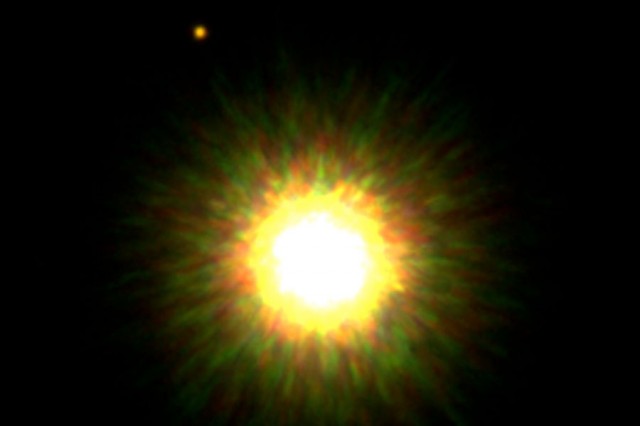
Although life seems to have gotten a quick start on it, the early Earth was a nasty place. Very early on (and perhaps again later), meteors frequently peppered the surface. The atmosphere contained no oxygen, and consequently no ozone, to shield the surface from UV radiation. To top it off, the juvenile Sun burned about 25 percent less brightly than it does today, which should have put the average surface temperature below the freezing point of water.
Except it wasn't. Geological evidence indicates plentiful liquid oceans were present soon after the Earth’s formation, and the first one and a half billion years showed no signs of glaciation. This puzzle, dubbed the “faint young Sun paradox,” was recognized by Carl Sagan and George Mullen in 1972.
Various factors have been proposed to resolve the paradox. Some have suggested that the Earth was less reflective—due to a paucity of continental land area and decreased cloud cover—allowing it to absorb more incoming sunlight. Other answers have focused on greenhouse gases. A lot of effort has gone into investigating how much CO2 and methane were present, and researchers have proposed other, more exotic greenhouse gasses, like carbonyl sulfide (OCS) might have been present. The atmosphere was likely denser, which would enhance the effectiveness of greenhouse gases.
While combinations of these factors are potentially sufficient to solve the puzzle, plenty of questions remain. In a paper published in Science, Robin Wordsworth and Raymond Pierrehumbert of the University of Chicago have added another possible solution to the list—the interaction of hydrogen and nitrogen in the atmosphere.
Neither hydrogen (H2) nor nitrogen (N2) is technically a greenhouse gas. They can’t absorb infrared radiation emitted by the Earth—a fact determined by their molecular structure. However, some odd things happen when they collide with each other. For a moment, the two colliding molecules behave as one larger one, allowing the absorption of infrared energy. This process is known to be an important part of the energy balance on Saturn’s moon Titan.
Until recently, it was believed that the early Earth’s atmosphere would have contained very little hydrogen, which can escape into space due to its light mass. But it has since been demonstrated that the escape rate would probably have been slower than initially expected, and hydrogen may actually have been plentiful.
When the University of Chicago researchers went about calculating the effect this would have, they found that it could have warmed the Earth by as much as 10 to 15°C. If that was the case, moderate contributions from other factors might have been more than enough to keep the Earth out of the deep freeze. (Then again, another recent study suggests the paradox might be even bigger than previously thought, requiring a larger warming effect to resolve it. In that case, large contributions all around might still be needed.)
Obviously, this collision-induced absorption would only be active as long as the atmosphere had significant amounts of hydrogen in it. When methane-producing bacteria (methanogens) came on the scene, that would have started to change. Methanogens take in CO2 and hydrogen and release methane and water. Of course, methane is also a greenhouse gas, so the story here is complicated.
Because of the specific wavelength of infrared radiation that methane absorbs, its greenhouse impact is easily saturated at the concentrations relevant to the early Earth. Beyond that point, additional methane won’t make much difference. When methanogens arose, they could have quickly driven the atmosphere to that point, so the consumption of hydrogen and CO2 would then have made the net result a cooling one. (In addition, high methane concentrations lead to the formation of a reflective haze that causes some more cooling.)
The researchers suggest it’s possible that the widespread glaciation that occurred about 2.9 billion years ago could have counter-intuitively been caused by the biological production of methane. There are a lot of important unknowns in that scenario, however, and the authors note it’s “an important topic for future study.”
Writing in a perspective that accompanied the paper in Science, Penn State Professor James Kasting noted that the implications of the study extended beyond the Earth. “[T]he realization that H2 can warm terrestrial planet climates could be important for the prebiotic Earth, early Mars, and young Earth-like exoplanets. Large amounts of H2 in a planet’s atmosphere could allow it to remain habitable out to as far as [ten times the distance from the Earth to the Sun] around a star like the Sun,” he wrote. “[W]e will… need to keep this H2 greenhouse warming mechanism in mind as we decipher our own solar system’s history and search for other habitable planets like our own.”
Science, 2013. DOI: 10.1126/science.1225759 (About DOIs).
reader comments
22